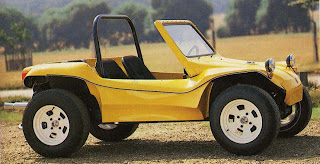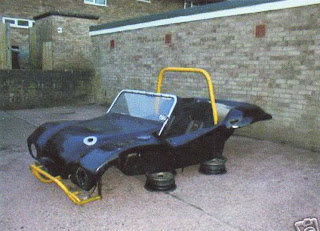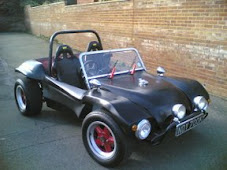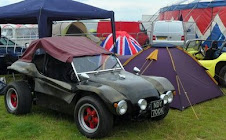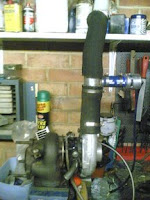 The heart of a good turbo engine is its turbo. I had purchased a Ford RS2000 Garret T3 turbo unit from eBay some months earlier with an interest in the possibility of turboing my Beach Buggy. The Garret T3 had arrived some weeks later and it was clear that buying a turbo from eBay was not a god investment. Firstly the exhaust housing was cracked and secondly the bearings where completely shot.
The heart of a good turbo engine is its turbo. I had purchased a Ford RS2000 Garret T3 turbo unit from eBay some months earlier with an interest in the possibility of turboing my Beach Buggy. The Garret T3 had arrived some weeks later and it was clear that buying a turbo from eBay was not a god investment. Firstly the exhaust housing was cracked and secondly the bearings where completely shot.Most people that know anything about car turbo parts will know that any part whatever it is will cost you at least £50.00. This can be anything as simple as a Samco hose made of a latex/silicon material to a simple repair kit.
I found a Garret T3 repair kit online and at the same time found a Bailey dump valve and some connecting tubing on EBay. I had left all this in the garage as I was in no hurry to rebuild the turbo as I had plenty other projects on the Buggy to keep me going.
The Garret T3 turbo is held together in there sections the exhaust housing, T
 he main water/oil bearing block and the turbine housing. All three are held together in the same way. The real skill comes in getting the bolts out from the housings as the turbo unit runs at very high temperatures which seize the bolts in place. Obviously with this in mind a good blow torch and determination is needed to remove the bolts holding the rings that hold the three components together.
he main water/oil bearing block and the turbine housing. All three are held together in the same way. The real skill comes in getting the bolts out from the housings as the turbo unit runs at very high temperatures which seize the bolts in place. Obviously with this in mind a good blow torch and determination is needed to remove the bolts holding the rings that hold the three components together.Once the securing rings around the turbine housing are removed the housing can be removed leaving the fan and bearing block exposed. The securing rings on the exhaust housing have to be undone in stages as the bolts will not come out all the way as they hit onto the bearing block. You need to twist the bearing block to rotate it so that all the bolts will come out. This took a vice and a hammer to release mine and the exhaust housing parted leaving the bearing block with two fans at each end. The fans are held onto a long shaft by a nut at the compressor end. This is torqued up to a very high torque and takes some getting undone. Once removed the spindle can be removed and the bearing block left .
The bearings are little brass rings on the T3 that are held in by circlips. It is important to ensure that the circlips sit in their grooves and to install the inside circlips on both sides before putting the bearing in followed by the securing circlip.
With the bearings installed and the other components that come with the bearing kit added the shaft can be reinstalled and torqued back up. I decided to grease the bearings with grease to ensure that they worked and had lubrication when the turbo was first fired up.
The rebuild of the turbo unit is exactly the reverse of dismantling it. The exhaust housing needs to be rotated on the bearing block to allow all the bolts to be inserted.
With the turbo rebuilt i decided to cut the pipes to supply the air supply to pressure ducting and then to the pressure covers that where going to go over the Weber 40 IDF carburettors.
The process of building the turbo unit was going to be a slow one as finances fro this project where not in place and as most components where around £50.00 or above and their availability was nearly impossible to find. I new this was going to have to be revisited several times as an when I could purchase a part to add to the turbo unit.





